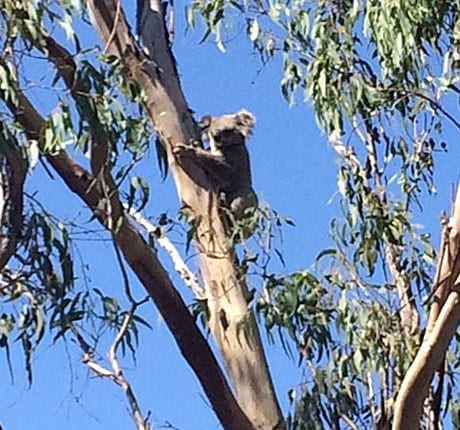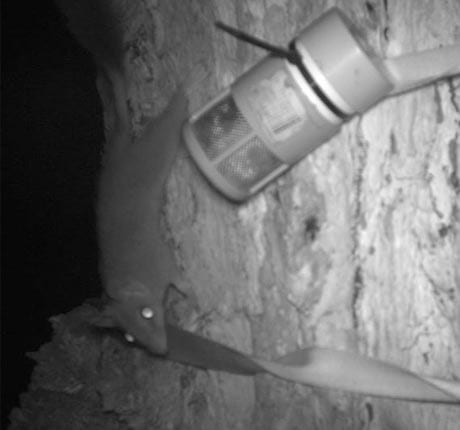
Koala
The Koala occurs from north-eastern Queensland, south along the coast and ranges to south-western South Australia, including areas west of the Great Dividing Range (DECC 2008). The species inhabits eucalypt woodlands and forests and feeds on the foliage of Eucalypt and non-Eucalypt species.
The species is generally solitary, but they have a complex social hierarchy, living in breeding aggregations comprising of the territory of a dominant male overlapping a small number of mature females, also juveniles of various ages occur. Across their range, adult Koalas generally exhibit long-term fidelity to their individual home range. Within the Port Stephens area studies have established home ranges of 0.2 ha to 500 ha, with an average of 80 – 90 ha.

Southern Myotis Bat
The Southern Myotis is a species of microbat which has disproportionately large feet with widely spaced toes which are distinctly hairy. It is dark- grey to reddish brown above and paler below. The Southern Myotis is found in the coastal band from the north- west of Australia, across the top end and south to western Victoria. It is typically found in coastal areas, within 100 km of the coast, although it can be found inland along major rivers.
The Southern Myotis generally roosts close to water and can be found in caves, mine shafts, hollow- bearing trees, stormwater channels, buildings, under bridges and in dense foliage. They forage over streams and pools and catch insects and fish by raking their feet across the surface.

Brush-tailed Phascogale
The Brush- tailed Phascogale is a small nocturnal marsupial which has a patchy distribution around the coast of Australia. They are agile climbers which forage preferentially in rough- barked trees of 25 cm diameter at breast height, or greater. Brush- tailed Phascogales have a characteristic black, bushy tail with hairs up to four centimetres long. It is grey above and pale cream below with large naked ears.
The species occurs in dry sclerophyll forests and woodlands of temperate and tropical Australia. The species prefers open forest with sparse groundcover, but can use habitat ranging from mallee to rainforest. Brush- tailed Phascogales feed mostly on arthropods but will also eat other invertebrates, nectar and sometimes small vertebrates. They nest in tree hollows with entrances 2.5 to 4 cm centimes wide and use many different hollows over a short time span

Squirrel Glider Possum
The sugar glider is a small arboreal marsupial. It has a head-body length of 16 – 21 cm and a 16 – 21 cm tail. Adults weigh 100 – 160 grams, with males slightly heavier than females. The body is covered with grey to brown fur with a prominent dark dorsal stripe that extends to the forehead. Its tail is long, well-furred and prehensile. It has stretchy membranes that extend on both sides of the body between the front and back limbs.
The Sugar Glider is likely threatened by clearing of its native woodland habitat by urban and agricultural development, altered fire regimes and predation by introduced predators including cats and foxes.